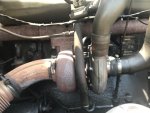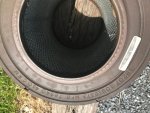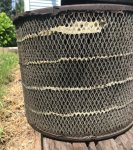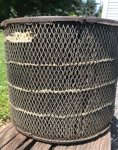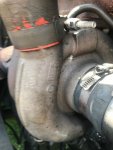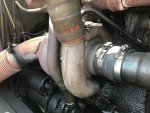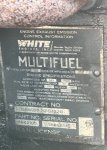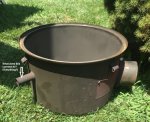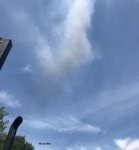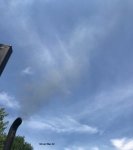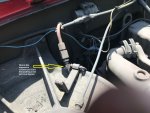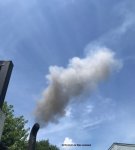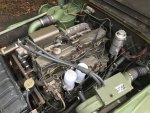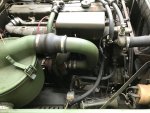I just stumbled upon a brand new whistler turbo today for $520. That's half of what I paid for mine direct from Switzer. I'll try to find the webpage. My exhaust wheel looked like someone took a grinder to it. That's why I replaced rather than rebuilt it. I don't think turbochargers are supposed to have any noticeable play either radially or axially. They are a pretty close fit to the housing. Otherwise, they would not build boost. A turbocharger is essentially a reaction turbine and needs close tolerances to pump efficiently. Plus, if you have a lot of black smoke coming out of the exhaust, some lubricating oil may be getting into the exhaust side turbine. If the turbocharger is not spinning rapidly enough or not at all when the engine is running you could have an exhaust restriction which may account for the lack of power.
Have you run the truck with the replacement turbo? Did you fix what killed the last one? Could have been hit by a foreign object left in the manifold by a mechanic, or an engine part. Melted blades can look similar unless you know what you are looking at.
Radial play can be felt. It's less when the bearing housing is full of oil. Nearly all turbos have journal bearings - bronze or brass sleeves - and there is a film of engine oil in the I.D. between the bearing and shaft and also between the O.D. of the bearing and the bore of the housing it rides in. Shaft, bearings, housing, and thrust bearing on the compressor side never touch each other. When the rotating assembly spools up and down there is some radial pressure that presses on the film of oil on one side or the other. There is slight movement, but the film resists most of it.
I found it. C&C Equipment carries them brand new for $599 without the gaskets and stuff I guess. I paid $1,485 for mine from another supplier. Boy did I ever get ripped off! I'd go with a rebuild kit first, but if your turbo turns out to be shot, C&C's turbo price is a really good deal.
What's the part number for both of them?
Oil can sneak into the turbine and compressor, especially if idling a long period of time, but when driving it shouldn't be enough to cause more smoke than a diesel normally makes, which is black. Oil smoke is usually blueish. A lot of oil lost there means a collapsed or broken seal ring on that side, or the oil in the housing is not draining into the crankcase and it's backing up, so it wants to go out the end gap of the rings on both sides, which are like engine piston rings. Or there is excess crankcase pressure from a hole in a piston or broken rings and oil is pumping up the drain tube. Anything that keeps feed oil from getting into the top of the housing and into the bearings will kill the turbo. Oil will sit there, heat up, and turn to coke, now it's not oily. Oil lubricates but is also the cooliing mechanism. It needs to be moving through there.
Remember, no goop or teflon tape on the oil inlet fitting. You don't want any piece of that going downstream.



